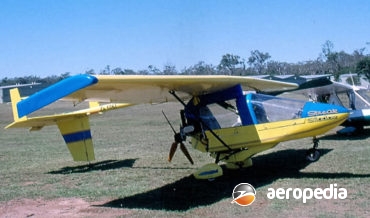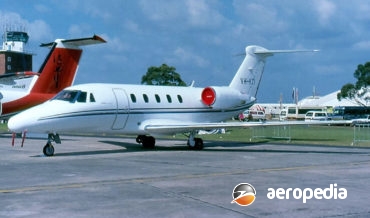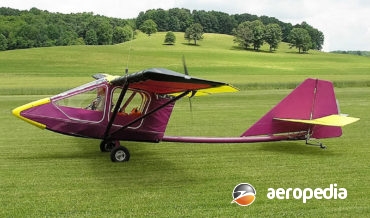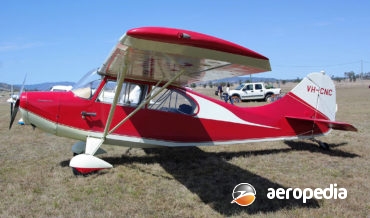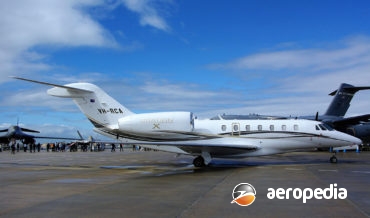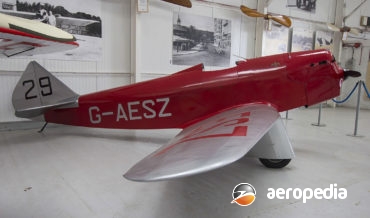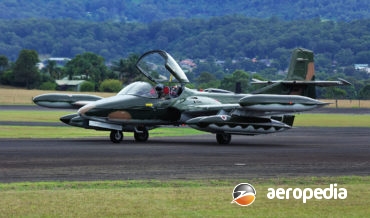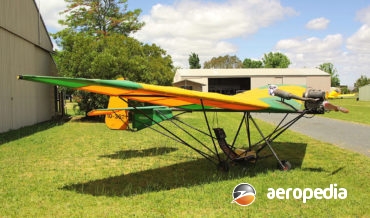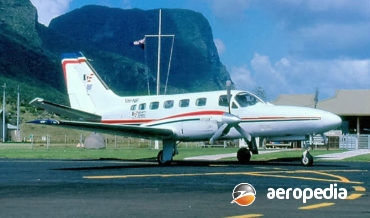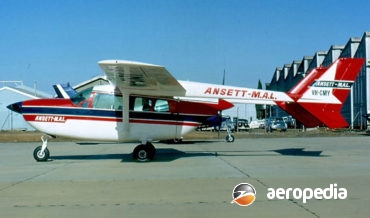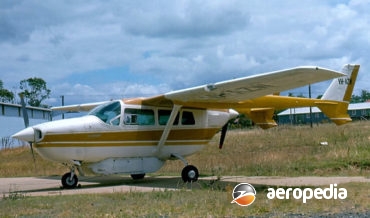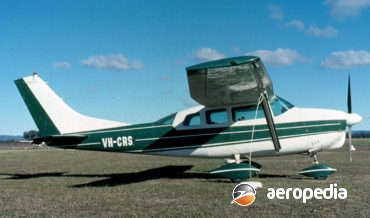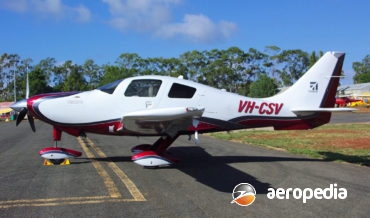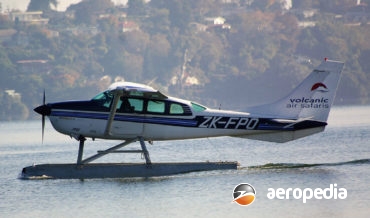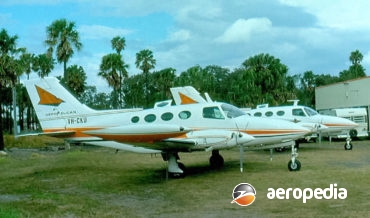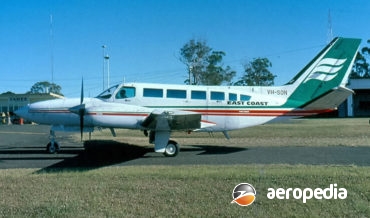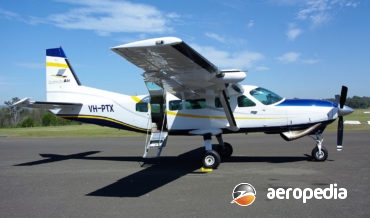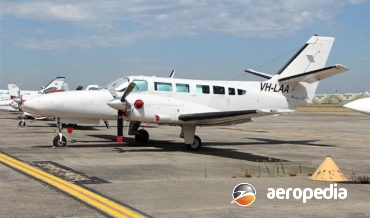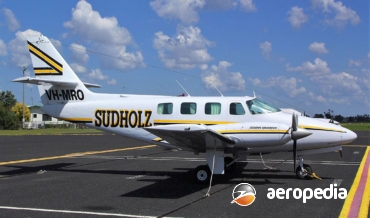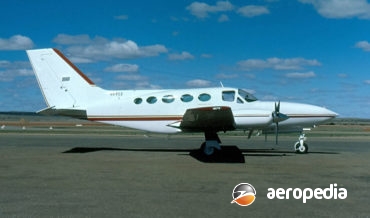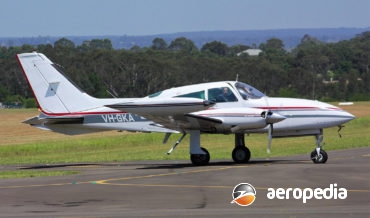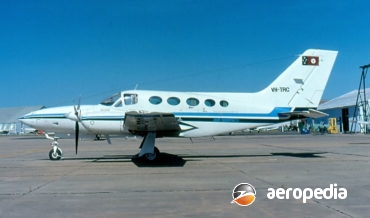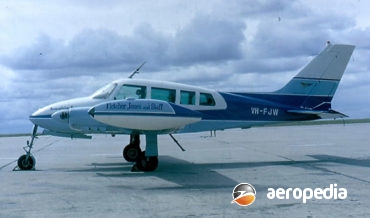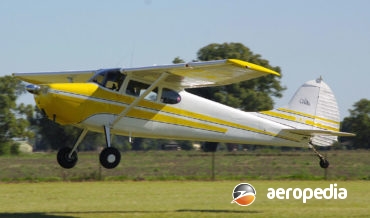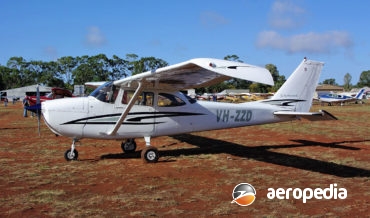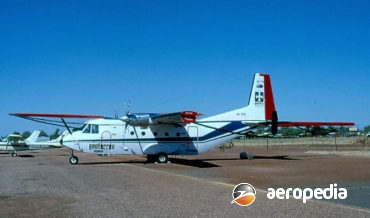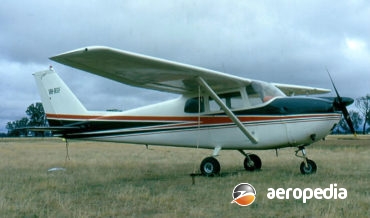All Contents
Contents
The Streak and Shadow light aircraft were produced by the Cook Flying Machine Company (CFM) in the United Kingdom and have been a sales success, with examples sold to more than 36 countries around the world, including New Zealand and Australia.
David C. Eyre
- May 17, 2019
Although receiving the designation “Citation” in the Cessna corporate jet series, the Citation II was a completely new design which had no commonality with the earlier series,
David C. Eyre
- May 17, 2019
The Hawk series of light aircraft was designed by CGS Aviation Inc of Broadview Heights, Ohio, formerly Chuck’s Glider Supplies, the first machine being made available in 1980, as a single-seat light sporting aircraft which could be made available in kit form.
David C. Eyre
- May 17, 2019
The Cessna Sovereign was designed as a mid-size corporate business aircraft aimed at replacing aircraft such as the Falcon 10, Westwind and Sabreliner in the market.
David C. Eyre
- May 17, 2019
The Champion series of aircraft was introduced in 1946 by the Aeronca Manufacturing Corporation and subsequently it and a number of other manufacturers developed the design in various models, with various power plants.
David C. Eyre
- May 17, 2019
The Cessna 750 Citation X series was announced in October 1990, at the US NBAA annual conference, testing of the engine taking place initially on a citation VII testbed (N650) in August 1992.
David C. Eyre
- May 17, 2019
One of the earliest homebuilts, the DW-1 was designed by Messrs Dalrymple and Ward in 1937 as an easy to build and operate light aircraft with good performance.
David C. Eyre
- May 17, 2019
In 1953 the Cessna with its Model 318 won a design competition for production of a two-seat side-by-side jet trainer for the USAF powered by two Continental J-69 engines, these being Americanised versions of the French Turbomeca Marbore. Two prototypes were built with the designation XT-37, the first flying
David C. Eyre
- May 17, 2019
The Weedhopper was a high-wing ultralight aircraft fitted with an engine in the tractor configuration, a tricycle undercarriage, and with two-axis control. It was initially developed by John Chota in the late 1970s during the boom in ultralight aircraft and was introduced to the market in 1977.
David C. Eyre
- May 17, 2019
The first Cessna Model C-34 was completed in June 1935 at Cessna’s Wichita, Kansas, plant, and shortly thereafter it was entered in the All Kansas Tour (1,609 km -1,000mile) when it easily won a 40 km (25 miles) free-for-all race. Fitted with a Warner Super Scarab engine, the Model
David C. Eyre
- May 17, 2019
The Cessna C165 was a development of the earlier Models C-37 and C-38 produced by the Cessna Aircraft Co at its Wichita, Kansas facility shortly before the commencement of World War I. It was the culmination of the development of the Super Scarab powered series, and was a stylish, clean,
David C. Eyre
- May 17, 2019
The first turboprop business aircraft added to the Cessna range, the Conquest was designed as an intermediate-sized aircraft between the company’s piston-engine twins and the turbofan-power Citation series. The prototype flew for the first time on 26 August 1975, and the first production machine was delivered on 24 September 1977.
David C. Eyre
- May 17, 2019
Development of the Cessna 340 series was initiated in 1969 but, because the prototype was lost during test flying in 1970, trials were delayed and deliveries of production
David C. Eyre
- May 17, 2019
Design of the Cessna 188 series of agricultural aircraft began following a world market research and engineering survey of agricultural operators around the world by Cessna.
David C. Eyre
- May 17, 2019
Introduced into the Cessna range of aircraft in 1963, the Model 336 Skymaster was unique at that time amongst business light twin-engine aircraft as it had a tractor engine in the nose
David C. Eyre
- May 17, 2019
The Cessna 190 and 195 series of aircraft was a large, very comfortable, five-seat cantilever, high-wing monoplane produced by the Cessna Aircraft Company in the USA between 1947
David C. Eyre
- May 17, 2019
The Cessna Model 337 Super Skymaster series was introduced to the company’s range in February 1965 to replace the Model 336 on the production line. It continued the centre-line thrust concept of the previous model, and bore a close resemblance to that aircraft.
David C. Eyre
- May 17, 2019
The Model 205 was introduced into the Cessna range in August 1962 as a utility transport to suit operators which required a larger aircraft than the Model 185 Skywagon.
David C. Eyre
- May 17, 2019
Following the success of the Neico Lancair series of kitplanes, Lance Neibauer designed a production certificated aircraft based on the four-seat Lancair ES and set up a separate company to build and market the new type. First in the series became the Colombia 300.
David C. Eyre
- May 17, 2019
The Cessna 205 was a derivative of the Model 210 fitted with a fixed undercarriage and increased passengercapacity.
David C. Eyre
- May 17, 2019
The prototype Cessna 401 was flown for the first time on 26 August 1965. Designed as a lighter and cheaper version of the Cessna 411, the 401 was aimed at the business and executive market but, in its developed form, the type was used in the commuter airliner role.
David C. Eyre
- May 17, 2019
Basically the Cessna 207 was a lengthened development of the Cessna 206 designed to improve load-carrying capability whilst retaining the operating economics of that aircraft.
David C. Eyre
- May 17, 2019
Following commencement of delivery of production aircraft late in 1976, the Model 404 Titan was offered in a range of variants designed specifically to meet the needs of businessmen and commuter airlines which required a large twin-engine aircraft with normally aspirated engines rather than turbines.
David C. Eyre
- May 17, 2019
The Cessna Caravan I was a completely new utility transport designed by the Cessna Company, and was the largest single-engine aircraft in the company’s line.
David C. Eyre
- May 17, 2019
The Model 406 Caravan II was developed as a joint venture between Cessna and its French associate, Reims Aviation, for the utility market. Reims has built over 6,000 Cessna-designed aircraft over the years and it was initially a joint concern but in 1989 Cessna sold its interest to the
David C. Eyre
- May 17, 2019
The Model 210 was introduced to the Cessna range in 1959 as an intermediate model between the 182 and the twin-engine 310
David C. Eyre
- May 17, 2019
In 1965 the Cessna 411 was introduced to the Cessna range as a twin-engine executive aircraft to compete again the Beechcraft Queen Air and the Aero Commander series. One of Cessna’s first ventures into the commuter aircraft market, the aircraft had the cabin separated from the passenger compartmentby a divider,
David C. Eyre
- May 17, 2019
On 14 February 1978 Cessna flew a new light-weight twin-engined series of aircraft knownas the Model 303.
David C. Eyre
- May 17, 2019
On 10 December 1969 Cessna announced it was introducing a new pressurised twin-engine aircraft known as the Model 414 and this aircraft combined the basic fuselage and tail unit of the Model 421 with the wing of the Model 401 fitted with two Continental TSIO-520-J turbo-supercharged engines driving three-blade constant-speed
David C. Eyre
- May 17, 2019
Production deliveries of the Cessna 310 series of light, twin-engine, executive aircraft commenced in 1954 from the Cessna Aircraft co plant at Wichita, Kansas,
David C. Eyre
- May 17, 2019
Designed as a replacement for the Cessna 411, the prototype of the Model 421 was flown for the first time on 14 October 1965. The maindifferences between the 421 and the 411 were the up-rated engines and pressurised cabin of the new model, thus permitting it to cruise at
David C. Eyre
- May 17, 2019
Produced from 1962 to 1968, with a total of 579 aircraft being completed, the Model 320 Skynight was an all-metal, five-seat, executive,
David C. Eyre
- May 17, 2019
Intended to meet the requirements of ‘bush’ fliers around the world, the Cessna 185 was designed a s a rugged utility aircraft.
David C. Eyre
- May 17, 2019
The 152 was introduced to the Cessna range in 1978 as a redesign of the 150 and was, like its competitors the Beech Skipper and Piper Tomahawk, aimed at the training market as a new design.
David C. Eyre
- May 17, 2019
In 2006 Cessna announced it intended to produce a series of new designs using modern technology and, amongst these, was a new training aircraft, seating two, to meet new light sport aircraft regulations introduced into the United States.
David C. Eyre
- May 17, 2019
The Model 170 was introduced into the Cessna range in 1948 as a development of the earlier two-seat light cabin monoplanes, the Models 120 and 140, and to meet a requirement among operators in the United States for four seats.
David C. Eyre
- May 17, 2019
In 1932 Mr Clifford Carpenter, a nephew of Sir Walter Carpenter, a member of the W R Carpenter & Co organisation, assisted by Messrs W Murrell, H Wyatt, C Scott and R A Grey, built a light aircraft over a period of two years in the garage of Borrows
David C. Eyre
- May 17, 2019
Derived from the Model 170, the 172 differed initially mainly in that it had a tricycle undercarriage.
David C. Eyre
- May 17, 2019
The C212 Aviocar was a development of the CASA Aviocar STOL military aircraft designed to replace the Junkers Ju-52 and the Douglas C-47 in Spanish Airforce service.
David C. Eyre
- May 17, 2019
The Cessna 175 series was introduced to the Cessna range in 1958. The Skylark was a deluxe version of the basic 175, in a similar way to the Skyhawk being a deluxe development of the 172.
David C. Eyre
- May 17, 2019
Recent Comments
Archives
Categories
- No categories
Categories
- No categories
Latest Posts
Newsletter

